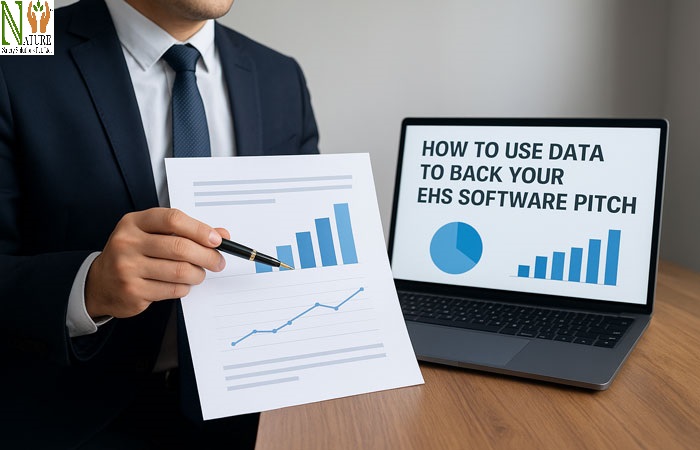Convincing management to invest in Environment, Health, and Safety (EHS) software can be challenging. Leaders want to know how the investment will bring value to the organization. A strong pitch backed with real data is often the difference between approval and rejection.
Data transforms your proposal from an opinion into a fact-based case that decision-makers can trust. This article explains why data matters, what kind of data to use, and how to present it effectively when pitching EHS software.

Why Data Matters in Your EHS Pitch
Numbers tell a story that words alone cannot. While you can describe how EHS software improves safety or efficiency, data provides proof. For example, saying “the software will reduce incident rates” is less convincing than showing that “companies using similar software saw a 30% drop in workplace incidents within one year.”
Using data in your pitch has three key benefits:
- Credibility – Data makes your pitch look professional and well-researched.
- Clarity – Decision-makers understand the value faster when it is shown in measurable terms.
- Confidence – Leaders feel more comfortable approving investments that are backed by evidence.
Types of Data That Strengthen Your Pitch
1. Incident and Injury Data
One of the strongest data points to use is information about workplace incidents, accidents, or near misses. If you can show how often incidents occur, their costs, and how EHS software can reduce them, your case becomes powerful. For example:
“Our department reported 25 near-misses last quarter. With automated reporting in EHS software, we can reduce underreporting and prevent incidents before they happen.”
2. Compliance Data
Regulatory compliance is another critical factor. Track how much time your team spends on compliance tasks, how often deadlines are missed, or how many audits raised concerns. You can then compare this with how software could simplify compliance management. Example:
“Manual tracking took 120 hours last year. With EHS software, this could be reduced by 60%, saving both time and labor costs.”
3. Productivity and Efficiency Data
Data about wasted time and resources makes your pitch stronger. Show how much time is currently spent on manual tasks such as paperwork, spreadsheets, or email tracking. Demonstrate how automation could reduce these hours.
“Our safety team spends 15 hours per week compiling reports. With automated dashboards, reporting can be generated instantly.”
4. Industry Benchmarks
If possible, include external data such as case studies, surveys, or industry reports. Benchmarking against other organizations can highlight gaps and opportunities. Example:
“According to industry benchmarks, organizations with EHS software report 40% fewer compliance violations than those using manual systems.”
5. Financial Data
Most leaders want to see the financial impact. This includes costs of incidents, penalties, and wasted labor hours. Show how the software investment compares with potential savings. Example:
“One workplace injury costs the company an average of $40,000. Preventing just two incidents per year would cover the cost of the software.”
How to Present Data Effectively
Use Clear Visuals
Charts, graphs, and dashboards are easier to understand than tables full of numbers. For example, a bar graph showing declining incident rates with software use is more persuasive than just stating percentages.
Keep It Relevant
Decision-makers don’t need every piece of data. Focus only on the data that directly supports the need for EHS software. Too much information can overwhelm and distract from your main message.
Tell a Story with Data
Data alone is not enough—it needs context. Use the data to explain a clear “before and after” picture. Show the current challenges, explain how software addresses them, and project the expected improvements.
Connect to Business Goals
Executives care about safety but also focus on cost savings, efficiency, and reputation. Link your data to these goals. For example:
“By reducing reporting time, managers will spend more time on production and less on paperwork. This directly supports our goal of improving operational efficiency.”
Common Mistakes to Avoid
- Using too much technical language – Keep the explanation simple so everyone can follow.
- Relying only on external data – Industry data is useful, but your internal data carries more weight.
- Ignoring financial impact – Always connect your data to cost savings or risk reduction.
- Failing to update data – Outdated or incomplete numbers weaken your pitch.
Benefits of a Data-Driven Pitch
When you use data effectively, your EHS software pitch becomes more persuasive. Benefits include:
- Faster decision-making – Leaders have fewer doubts when they see solid numbers.
- Stronger support – Data encourages buy-in not just from executives but also from managers and staff.
- Increased investment confidence – Leaders feel assured the software will deliver measurable returns.
Improved safety culture – Data-backed decisions highlight the company’s commitment to employee safety and compliance.
Also read :-
